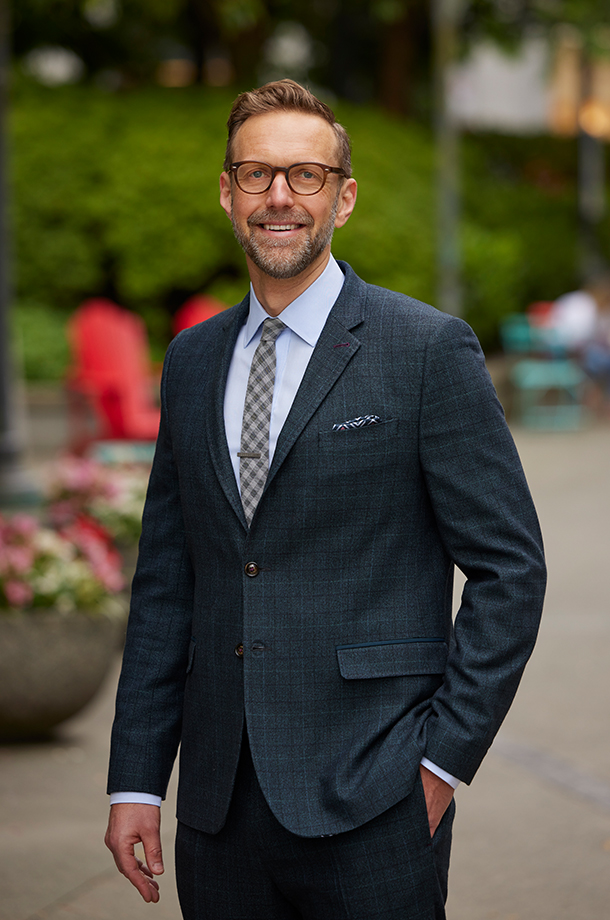
June 2019, Denver, Colorado – Maybe inspired by this mile-high location, the annual NACUA conference was a mile-wide and a mile-deep: 1,800 attendees, over 90 sessions, and over 2,300 pages of written materials.
In a word: overwhelming.
In two words: overwhelmingly impressive!
With the conference being this large, it touched upon every aspect of higher education law and practice—from student mental health to foreign influence in research; from investigations in any number of contexts (violence, discrimination, bullying, etc.), to IP; and from controversial donors and namesakes (both living and long-deceased) to export controls and real estate transactions.
Before I relay a few of my key takeaways, I’ll address the threshold question:
Was going to NACUA worth it?
In a word: Yes.
In seven words: Yes, and I’ll be back next year.
Why? Five reasons:
- Talking to Americans: Many administrators, faculty members and students here in Canada originate from the U.S. and they bring with them their world-view and understanding of the regulatory framework from the U.S. Therefore, it’s important to know where they are coming from, what their experiences have been, and what their frame of reference is—if only to help them see the differences in the Canadian and Provincial system we operate in.
- Working with American Institutions: As one presenter put it: science isn’t constrained by borders; international collaborations are prevalent and only increasing. Therefore, it’s important to understand the regulations and restrictions that U.S. institutions are operating under, allowing you to more quickly and efficiently negotiate research partnerships, funding agreements, student placements and exchanges.
- Understanding American Media Coverage: We’re all inundated with news coverage of the U.S. and the U.S. educational system. Understanding the American context puts all that coverage into perspective and helps me determine what (if anything) we in Canada can learn from that coverage. It also helps me in dispelling the unfortunately all-too-common notion that the Canadian system is simply an extension of the U.S. system, by default suffering from many of the same issues and being vulnerable to the same critiques.
- Benefiting from a wider breadth of experience: Given the size and the diversity of the U.S. higher education sector and their zeal for rule-making (whether through legislation, litigation, policies, directives, orders, etc.), there is a good chance that any issue you are facing here in Canada has been faced by someone there. Many of the conference sessions were centred around lessons learned in dealing with common issues, such as alternative dispute resolution mechanisms in sexual violence cases, and dealings with controversial speakers, monuments and traditions on campus. Such sessions were extraordinarily useful and the learning was further broadened when the folks in the audience contributed with their personal experiences in dealing with these issues. The openness of the attendees to discuss further meant that with a few introductions, one can leave any session with great contacts to follow up with.
- A peek into the future? The phrase I’ve often heard is that the U.S. is about 5 – 10 years ahead of Canada in terms of the sorts of issues they’re dealing with and in regards to the strategies used to deal with them. That may or may not be accurate, but what appears to me is that their size and breadth means that whatever is coming for all us, may well pop up first in the U.S. Less obviously, U.S. institutions are balancing a broad range of interests and mandates, and they are under threat from all sides: from politicians and the courts who are treating them as if they’re large, heartless businesses, to students who are questioning the value of the curriculum, to the general public who see them as either corrupt or unscrupulous (whether that is in their admissions process or their high tuition fees). As a result, these U.S. institutions are trying new things, they’re innovating, and they’re showing us the consequences of doing it right, as well as what is at stake if you get it wrong.
Back to the conference itself … I attended as many sessions as I could and brought home various valuable lessons learned, choice tid-bits, and a fair number of pithy phrases (my two favourites: “in-house counsel give advice, not orders”, and “let’s turn the page of history, not rip it out”).
For the purposes of this article, I’ve limited myself to the following four lessons:
- Students are interconnected but are not connecting—that’s a problem. Students are reporting more technologically-mediated connection, but much less face-to-face and eye-to-eye contact with one another, their families and the outside world. In practical terms, this amounts to much less time spent outside of the home hanging out with friends, much less partying, even much less dating. While this is correlation not causation, students are also reporting increasing levels of anxiety, depression and trauma, and increasing levels of sadness and loneliness. This current research suggests that it is not merely the perceived reward of social connection that matters (how many ‘followers’ or ‘friends’ one has), but rather the quality of those connections. Whatever the cause, student mental health issues that may result in student suffering, academic failure and worse (e.g. harming themselves or others) are on the rise and need a holistic, multi-disciplinary approach.
One thing that was hinted at in a session that I didn’t attend was helping lawyers find increasing meaning and significance in their work. Those suggestions struck me as a way to address one of the important challenges we can (hopefully) all agree on: the focus on mental health must extend to our faculty and staff and—dare I say it—the lawyers working inside institutions, and those who serve them as external counsel. We’re tough customers, us lawyers, and in the U.S. it seems that attorneys have to wear armour. Let’s be frank, though, we’re at our best and serving our clients best, only when we also take care of ourselves.
- The gifts that keep on giving—Part 1: what’s in a name? Of course, quite a lot. Institutions are dealing with initiatives from students, faculty, alumni and the broader community to revisit the naming of existing buildings and to reconsider gifts where the donor has fallen into disrepute. Institutions are being pressed to balance the need to respond to legitimate concerns about what being affiliated with such persons says about the institution, with ever-changing attitudes and judgements often in contradiction with long-held and meaningful traditions.
In the particular context of names of historical people who held views that, while in keeping with those of their day, are today unacceptable: there is little in the way of law to guide legal counsel, so asking them for a legal opinion is likely to lead to a written version of a sympathetic shrug. In more modern cases, of course, naming is usually in recognition of a donation or gift, and naming rights are likely described in written agreements. Legal counsel can (and should) bring those conditions to bear on the issue, but the frequent consensus appears to be that the legal issues are beside the point. Whether legally required or required to satisfy the community, it is may nonetheless be best to sever all ties with the donor by returning the donation as well as changing the naming.
Of course, that is jumping to the most likely conclusion, whereas the most important part is the process by which that conclusion (or some other one) is arrived at.
Attendees shared experiences of bringing people together to discuss their respective perspectives and the mission of the institution, allowing each perspective to be voiced and heard. This created a meaningful dialogue amongst the community and it was most often the process that led to not just a good resolution, but one that best resonated and was accepted by the community.
- The gift that keeps on giving – Part 2: archival and museum collections. Institutions with significant archives and museum pieces are being increasingly approached by good faith (and sometimes less so) actors challenging the institution’s possession of certain pieces and, in some cases, entire collections. Many claims are legally based (copyright, stolen works, etc.), but a newer type of claim is being seen, based on more varied grounds. An example of such a claim is: a request that pictures of one’s ancestors or historical sacred sites be returned, because the pictures were taken either without authorization or at a time of systemic exploitation.
While the responses to these claims range from “see you in court” to “well then, here you go”, several counsel expressed the power of meaningful dialogue about the role and function of the institutional archives and museums, and their capacity to safeguard and protect works in perpetuity. From such respectful, but forceful discussions, sometimes spring meaningful and fruitful collaboration. In one notable case, the dialogue resulted in the conversion of an angry claimant into a willing donor of new and important materials.
- Collaboration as a survival strategy. The world of higher education law, regulation and policy is only increasing in complexity and volume. Everyone I spoke with reported that they’re busier than ever and that it is difficult to recruit and retain counsel. In that context, one of the ways to keep your head above water is to pool resources and collaborate. This can take various forms: from sharing written materials, facilitating webinars, and (despite all of their faults) periodically getting on a conference call with colleagues to share one’s challenges, have others help you see what you’re missing, and give you some needed perspective.
This last point resonates with me in particular and I’ll be focusing on doing my part as a member of NACUA and—more importantly—our very own, home-grown, Canadian Association of University Solicitors.
If you have questions about the value of the NACUA conference or NACUA membership, I would be happy to discuss it with you.



